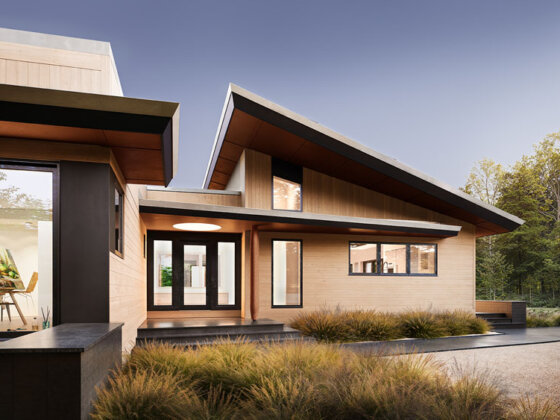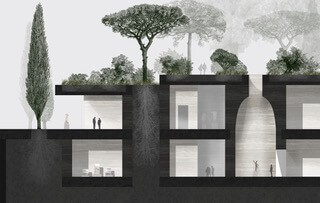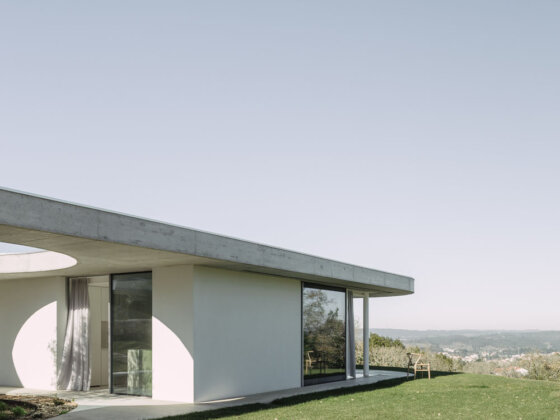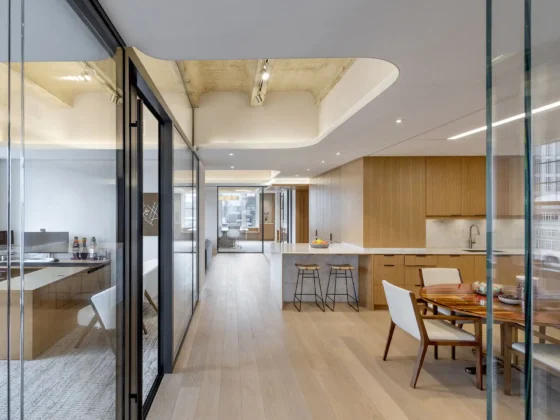Montpellier, France
The Boutonnet district, in which the Cité des Arts is located, is a residential area of Montpellier, with a relatively limited building height. The project’s aim was to define an urban composition plan that integrates spacious new public spaces: a public square and two forecourts.
The Cité des Arts has been awarded a 2023 International Architecture Award from The Chicago Athenaeum: Museum of Architecture and Design and The European Centre for Architecture, Design, and Urban Studies.

With a capacity of 2,200 students, the Cité des Arts includes a 400-seat auditorium, seven dance studios, a theatre studio, two orchestra stages, two audition rooms, two chamber music rooms, a contemporary music room, two practice rooms for percussion, a resource center and administrative premises.

The building is located on a site previously occupied by the Grasset Maternity Hospital, whose entrance pavilion has been preserved and enhanced in its early 20th-century architectural style.

In response to the morphological context of the urban environment, the architectural team of Architecturestudio has designed fragmented volumes, in order to create a “musical village” on whose roofs people dance.
The assembly of the different volumes creates spaces in which air and light circulate, offering terraces and hanging gardens. These different volumes, through the shadows but also through the coolness of the vegetation, create a naturally bioclimatic architecture suitable to Mediterranean climate conditions.

With outdoor spaces available on all floors, naturally lit corridors, various relations between inside and outside, and independent access to the auditorium and to the main music rooms for independent uses, the program clearly asserts its pedagogical and cultural ambitions: it constitutes a place of life for the artistic community and is open to the city.
On either side of the historic building, two forecourts have been created, corresponding to the main and secondary entrances to the building.

The public square, located at the corner of Crova and Forcrand streets, provides a place of relaxation and exchanges for people in the neighborhood and musicians.
The relationship between the building owner, who was very involved in the management of the program, and the architect was very constructive and complementary. Most of the programmatic decisions regarding the progress of the studies were made with the full agreement of both.

The users were also regularly invited to follow the studies and construction site progress, and their requests were followed up. The exterior facades of the music rooms are made of stained matte-finished low-carbon concrete, while wood is used inside in an extensive way for the acoustic treatment of the spaces. The main façade on Avenue Grasset, on either side of the historic pavilion, is made up of a curtain wall animated by silk-screened glass slats that form color-changing sun breakers.

Project: Cité des Arts
Architects: Architecturestudio
Associate Architects: MDR Architectes
General Contractor: Eiffage Construction
Client: Société d’aménagement de Montpelier Méditerranée Métropole (SA3M)
Photographers: Marie-Caroline Lucat













